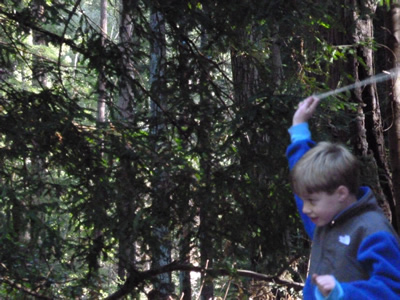The Sling
My 2 Cents
The sling is one of those projects that apply several skills into on project; making cordage, knot tying, and possibly casting metal if you have them make their projectiles. This is one of our posts that came from the archives from the early days of our program but is just as valuable as it was nearly 2 decades ago. Once your students make a working sling, it is a challenging tool to master, once mastered it is a survival skill that can be put in to play if all is available is weeds and some stones. At Northwestern Outdoor Leadership Institute one of our core routines is to put food on the table to give our participants more self-confidence and a deeper connection to nature. When our participant makes their tools to harvest food there is a leverage affect that cannot be measured but can be seen.
The Sling
This may seem like a simple toy but the sling has been a tool for hunting and defense since the Stone Age. It may have been a key player in the evolution of man and the development of the human brain. It was prominent in European art and was common on Roman Coinage. It was used on all continents, the Shoshone name for it was the Aitsikko (ate-seek-koh). Pomo used it here, and in many parts of the world it is still commonly used for both hunting and defense today.
The Sling’s Usefullness
Its range in the hands of the skilled is over 1500 feet, at 300 feet per second, with a 2 ounce stone; to put that in context, this is as good as modern 70 pound compound bow and arrow. Here is another way to think about it that is about ½ the speed of a .45 Colt but 4 times the mass therefore roughly equal to the same kinetic energy.
This may seem like a simple toy but the sling has been a tool for hunting and defense since the Stone Age. It was prominent in European art and was common on Roman Coinage. It was used on all continents, the Shoshone name for it was the Aitsikko (ate-seek-koh). Pomo used it here, and in many parts of the world it is still commonly used for both hunting and defense today.
The Sling’s Usefullness
In the hands of the skilled master a sling’s range is over 1500 feet, at 300 feet per second, with a 2 ounce stone; to put that in context, this is as good as modern 70 pound compound bow casting an arrow. Here is another way to think about it, that is about ½ the speed of a .45 Colt but 4 times the mass, therefore, roughly equal to the kinetic energy of a .45 colt.

All you need is a length of cordage twice as long as your out stretched arm to the opposite shoulder. For those that mentor kids in these skills, have them learn to make cordage at the same time. Watching the others using their sling is great motivation to making the sling. Stinging nettle, Brazilian flax, sisal, leather, and gut all work great for slings. I typically use 2 yarn waxed cordage made with sisal or stinging nettle
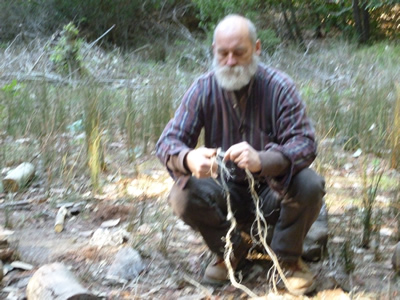
There are prettier ways of doing it but this way is very fast (with practice in less then 2 minutes) and only requires cordage, a bowline loop, a figure of 8 knot, and a sheep shank knot. Another advantage of this method is it is so fast and easy that you can un-tie it so the cordage dos not have to be dedicated to one task.
Put a loop in one end with a bowline, pass the cordage though to make a choke Put the choke on your right thumb or a fingere (if right handed). Out stretch that arm, take up the slack and mark the cordage where it touches the left shoulder
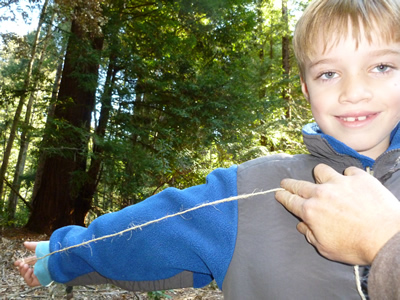
Oops the photo is in correct, the left shoulder. Right hand to left shoulder, this gives you ample cordage to make the basket. Time to take some more pictures.
Now make 3 1/2 wraps around a loose hand. The first wrap starts where the cordage was marked
Carefully remove the coils from your hand and make a sheep shank trapping the loops
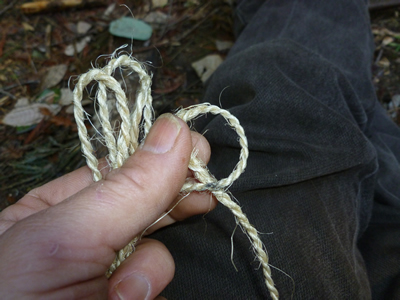
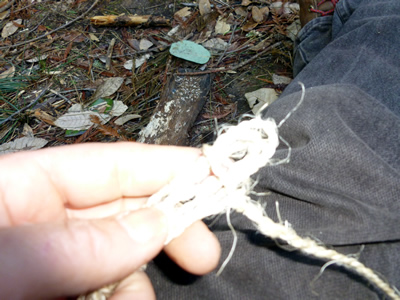
Pass the ends of the cordage back through the loops
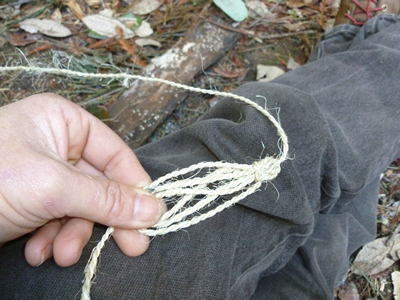
Dressing it so that all 7 strands of the pocket are the same length and the ends of the cordage comes out the same side of the bundle
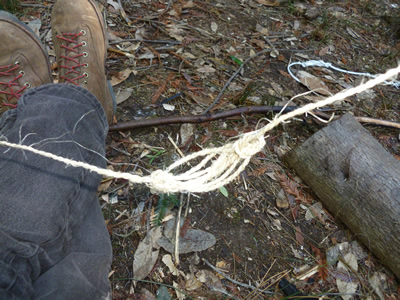
Put the choke on the thumb of the right hand.
Put a figure of 8 stopper knot on the other end so that when grasped between the thumb and index finger. Adjust the location of the knot so both lengths are the same.
When first learning 360 degrees around the thrower for about 100 is not safe. Therefore, tennis balls are a good non-lethal projectile to learn with, then move to golf balls, then to golf ball sized stones. If stones are not available in your zone try a one to two ounce fishing weight or better a .75 round ball. We have the students cast their own in the blacksmith shop or camp fire.
If the projectile seems to falls through the pocket shorten the length of the pocket or weave a bit of cordage into the pocket to make it more solid.
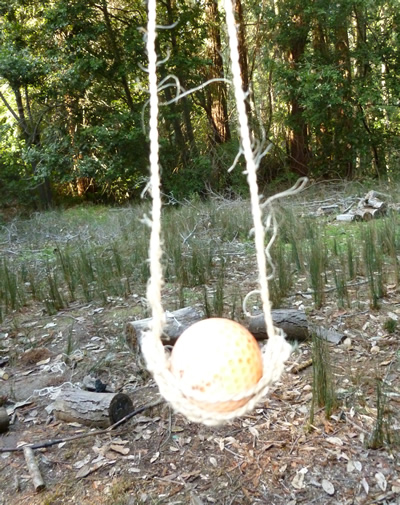
My grandfather, in his mid 80’s in the mid 1960 told me when he gave me my first stone thrower, “If you get good at this, and there are rabbits and starlings, if ever there is a need you will not have to worry where your next meal will come from.”
There has been a lot of things I have forgotten over the past 1/2 century but not that statement from that gentle and patient man or the fun I had with my stone thrower that summer. No, I have never had the need to eat a starling but it is still good to know.
